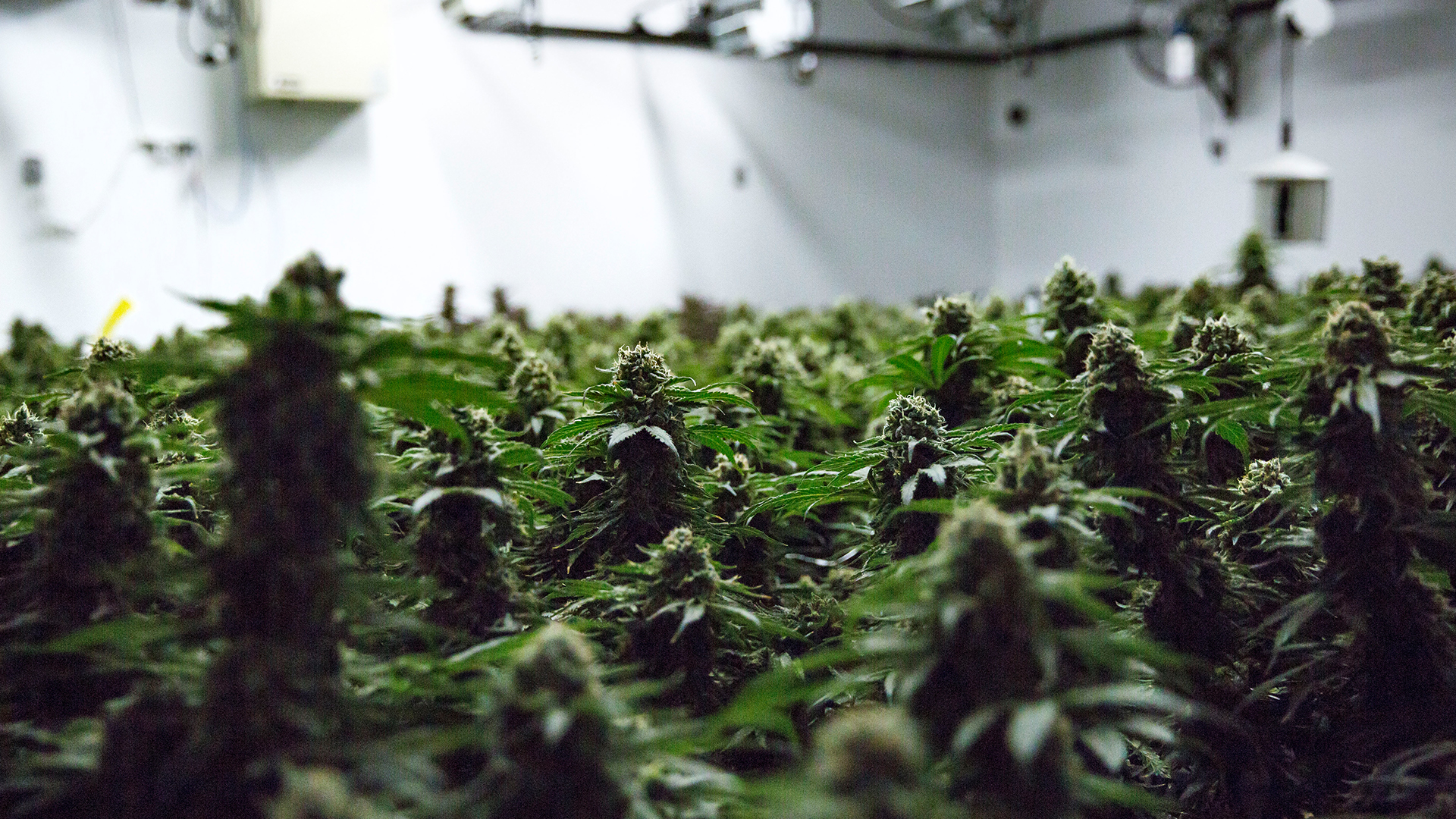
This article was updated Oct. 20, 2023.
Canada’s reputation for growing world-class bud has taken a big hit as legalization has ushered in an era characterized by mass production of often-unsalable, low-quality schwag.
Some signs of progress are evident as the industry adjusts to the realization that the dream was oversold, but there is still a long, long way to go.
What is needed is a sustainable model for clean, safe, legal cannabis production that is worthy of the label “Canadian-grown.”
Steps toward achieving that goal include increased outdoor regenerative farming, more rigorous inspection of production facilities, a shift from toxic to organic production methods, and use of appellations models for cannabis like those used in the wine industry.
Made in Canada?
Cannabis legalization has been rationalized in Canada as the realization of evidence-based policy that replaced criminalization with a public-health approach.
Five years into this experiment, however, the government has tended to prioritize protecting corporate interests, characterized by the mass production of commodities for profit, and has paid only lip service to protecting health and safety.
Canada’s embrace of the corporate cannabis model, wherein the biggest players are rewarded for predatory practices and out-competing smaller businesses, restricts production to profit-driven business interests still incapable of producing quality cannabis at scale.
The downside of adopting this market-driven model of cannabis production is coming to fruition. The warning signs were there all along.
Licensed producers chasing profits fought and flouted regulations to satisfy investors lured by the promise of a green rush, fueled by hype and optics, as stock valuations soared. Optimism about the lucrative new industry was so high that the actual market value and capacity to produce became inflated and distorted amid the fear of missing out.
It would not take long before the sobering reality began dawning on stockholders that many had been duped, leading to accusations that overly ambitious operators and bad actors were running pump-and-dump investment scams.
The level of problems in the industry is facilitated by government complicity in promoting corporate interests via regulatory processes that provide immunity from being held accountable by overlooking or minimizing certain indiscretions.
Business-friendly regulations that allow for cutting corners to ensure higher profits have created an environment that rewards the mass production of toxic products under unsafe work conditions.
These same regulations include licensing restrictions that exclude large numbers of small farms and skilled craft growers from participation in the legal cannabis market.
The environmental impact
Indoor cannabis production has a massive carbon footprint. Researcher Evan Mills estimates that one average kilogram of final cannabis product is associated with 4,600 kilograms of carbon-dioxide emissions to the atmosphere, or those of three million average U.S. cars when aggregated across all U.S. production. In other words, U.S. national cannabis emissions equate to those of three million cars.*
But that is only part of the story.
Commitment to the production of clean cannabis in the future means acknowledging that commercial fertilizers used today in its production are toxic to human health.
Cannabis is classified as an accumulator plant. It absorbs everything found in the environment – including all contaminants – so effectively that cannabis was grown after the meltdown at Chernobyl to remove radioactive waste from the soil.
In the U.S., millions of pounds of toxic waste containing zinc (as well as lead, arsenic, cadmium, chromium, nickel and other contaminants listed on products as “other ingredients”) are sold to farms and fertilizer companies each year for agriculture.
Use of these products to promote plant growth is thereby tacitly accepted as a risk to workers and consumers that is worth taking to enable mass production of cannabis at scale.
The use of toxic pesticides is rampant in the cannabis industry, including myclobutanil – a banned fungicide so dangerous that workers are warned to wear hazmat suits and respirators while handling it because, in the words of Warren Porter, a specialist in molecular and environmental toxicology at the University of Wisconsin-Madison, handling the product in ultra-low doses over extended periods can have all kinds of deleterious biological ill-effects.
Further, the health risks get passed onto cannabis consumers via combustion (i.e., smoking or vaping), because when burned the fungicide turns to hydrogen cyanide and hydrogen chloride. Cannabis political consumerism expert Elizabeth A. Bennett concurs in her 2019 publication Prohibition, Legalization, and Political Consumerism: Insights from the US and Canadian Cannabis Markets (Oxford Handbooks), where she concludes, “Unsurprisingly, contaminated products are sold on the legal market. Some have high residue levels of legal pesticides, while others have been treated with chemicals unfit for consumption.”
Concern for the health and safety of cannabis workers and consumers has been relegated to an honour system in which struggling producers police their own activities and make up their own rules.
A possible way forward
A commitment to the production of clean cannabis requires engagement with stakeholders with the knowledge and experience to move beyond compliance to sustainable production.
Outdoor regenerative farming is a viable solution that has been neglected in the greed rush fueled by the desire to generate quick profits. Knowledgeable growers with integrity are well-versed in workable alternatives to chemical solutions for pest control and fertilization of the kind that are encouraged and approved for edible plants.
Outdoor growing is encouraged to prevent the growth of fungus and mildews often treated with toxic chemical applications. The use of natural products that protect the plant, environment, workers and consumers has been willfully neglected by exploitative agribusiness models in the blind pursuit of profit at all costs.
Committing to the production of clean cannabis also requires more rigorous inspections, with inspectors having the power to issue fines, close facilities and charge repeat offenders.
Environmental stewardship that fosters the transition to a greener green rush requires a shift from toxic to organic growing methods, and from artificial to natural light sources.
Facilitating the transformation of the industry demands both new regulations to enforce accountability, including full disclosure of all ingredients in pesticides and fertilizers used by cannabis producers, and government incentives in the form of corporate tax cuts and grants to encourage better growing practices.
Toward an appellations model
The economic risk posed by the 1988 Canada-U.S. bilateral free trade agreement led to the creation of Ontario’s VQA, an appellation marketing and production program aimed at promoting provincial wineries over cheaper American competitors.
A similar existential threat currently imperils Canada’s cannabis production industry. The prevailing quality issues are alienating many discerning would-be legal cannabis consumers, who are essential to expansion of the regulated market.
An innovative pathway to achieving this objective in cannabis production is the appellations model, which would destigmatize and foster craft cannabis cultivation in rural communities and on local family farms. An appellation has a governing body guaranteeing the geographic origin and related practices that go into producing an agricultural commodity.
The world’s most famous appellation is France’s Champagne region, and its world-renowned product.
In Ontario alone, there are several potential appellations regions that are ideal for growing cannabis, each with its own distinctive soil, topography, and climate (or terroir).
These include the Niagara Peninsula, Southwestern Ontario’s tobacco belt, the promontory of Prince Edward County, and the surrounding agricultural regions between Northumberland and Tweed into the territory of the Mohawks of the Bay of Quinte, and the province’s eastern townships.
Developing a cannabis appellations model, as has been adopted in California, would demonstrate commitment to protecting the environment.
The time has come to take all the steps necessary to restore Canada’s global reputation by committing to clean, legal, craft cannabis production.
Note to readers: A statistic by researcher Evan Mills was presented incorrectly in an earlier version of this article. U.S. cannabis emissions, not those of a single kilogram, equate to those of three million cars.










